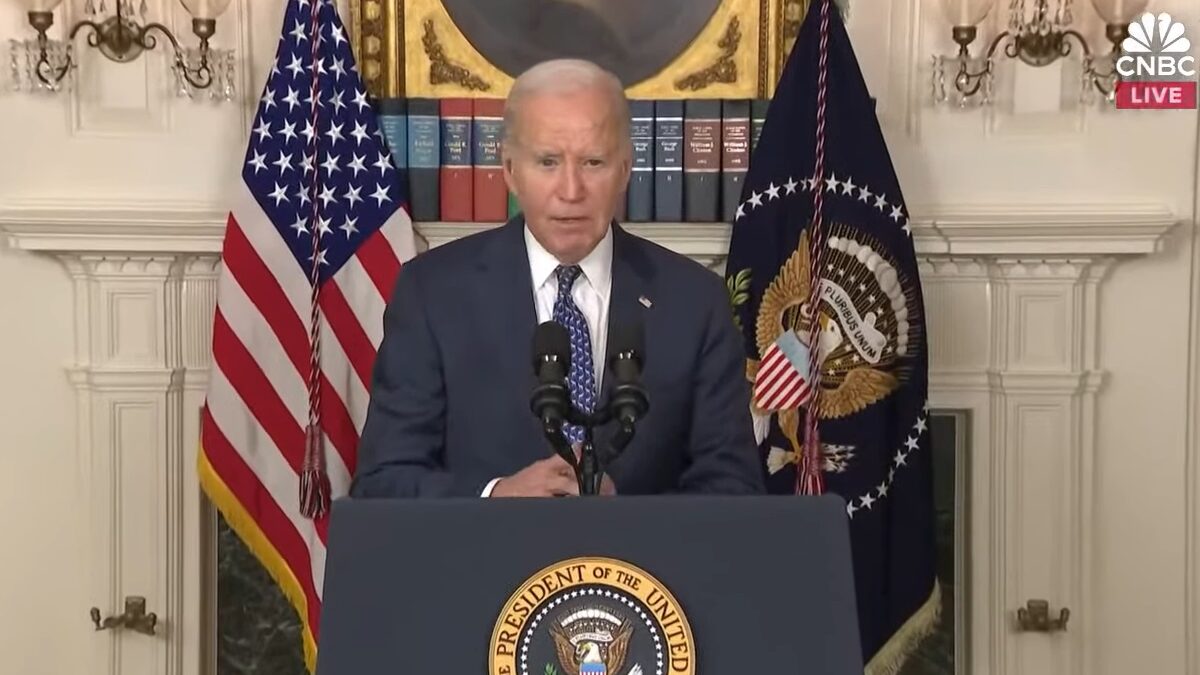
Magna Carta was one of the most important documents in the historical development of individual rights. So why did it include mundane things like the promise that constables wouldn’t take people’s corn? This week, the Supreme Court heard argument in Carpenter v. United States, a case dealing with a similarly ubiquitous item in our modern age: telecommunications data.
Like King John did with corn when rebel barons forced his hand in 1215, the Supreme Court should protect our telecom data from being wrongly seized. The court should recognize this data as the property of telecom users and require a warrant before it is seized.
To provide good-quality cellular service, telecom providers store data reflecting each phone’s connections to individual cell towers. This creates bushels of data about the minute-to-minute locations of every smartphone user. The question in Carpenter is whether government agents need a warrant to seize that data.
In the case, the government forced telecom providers to hand over data indicating where robbery suspects had been when a string of crimes occurred in the Detroit area. Under the federal Stored Communications Act, the government had to meet only a low “relevance” standard to require that the data be handed over. That is a much lower standard than the probable cause requirement for warrants under the Fourth Amendment. The data helped confirm the locations of their suspects and convict them.
That’s a fine result, but it should have required the government to overcome a higher legal hurdle. That’s because we all own our telecommunications data. They are our digital papers and effects. Government agents who want to access them should get a warrant.
The Government Wants to Get Your Data Whenever
Much like corn was in the Middle Ages, property rights in data today are not well respected or understood. Data and communications are too often and irregularly seized by government constables—to say nothing of highwaymen.
That was one of the problems Magna Carta addressed for ordinary physical items. “Corn” (the word then used for cereal grains), horses, carts, and wood all received special mention because government officials too often seized these things.
In Carpenter, the government argues that telecommunications data should be relatively free for the taking. The government argues people don’t have a “reasonable expectation of privacy” in such data, and thus no Fourth Amendment claim, because they have shared it with a third-party service provider. A case that supports that view is Smith v. Maryland, in which the Supreme Court approved the use of a pen register installed at police request (without a warrant) to track the numbers a suspect dialed.
The 1979 Smith decision did not examine why people might expect privacy in the numbers they dialed. It only discussed why they would not. And it did not rely on research into people’s actual privacy expectations.
Smith was probably wrongly decided in its own time. But today telecommunications data is much more voluminous and revealing. Correlations among the minute-to-minute locations of cell phone users can reveal their relationships and business dealings, their medical and psychological treatments, religious practice, political activities, and more. If it does not overrule Smith, the court should distinguish it based on the massive changes in data gathering and analysis since the 1970s.
The Supreme Court Should Secure Digital Property
But the Supreme Court can do one better. It should abandon the doctrine that produced Smith.
The Smith decision relied on confusing “reasonable expectation of privacy” doctrine. That court-invented rule says that a “search” occurs if government investigators upset expectations of privacy that they find to be reasonable. It is a long way from the Fourth Amendment’s text, which says nothing about privacy. It declares the “right of the people to be secure in their persons, houses, papers, and effects against unreasonable searches and seizures.” The Fourth Amendment asks about the reasonableness of government agents’ actions, not the reasonableness of people wanting privacy.
Instead of improvising with confusing doctrine, the court should follow the language of the Constitution. It should first ask whether there has been a seizure or search of data. Both happened in Carpenter. To confirm the presence of suspects near a series of armed robberies, government agents forced two telecommunications providers to disgorge location data—a seizure—then processed it to draw out its meaning. That was a search.
It is a little less clear that digital materials are “papers” or “effects,” but much evidence from the time of the Framing suggests that the Fourth Amendment protects writings and records as such. That includes digital materials right along with things printed on flat sheets of cellulose.
Who Owns the Data You Generate?
That leaves a crucial question: Whose data is it? Can telecom users argue their interests in data about them? This is where property rights in data come in. The government makes much of the fact that telecom providers collect the data. The government says they are “business records”—not a legal term of art—so smartphone users should have no claim.
But the Terms of Service statements and privacy policies that telecom companies issue allocate most rights to control and use personal data to customers. Consistent with practice across digital services, these contracts give us the right to exclude others from personal data in all but closely defined circumstances. They respond to the privacy demands of consumers in the marketplace.
The right to exclude others is an essential property right. It is an important protection for privacy and liberty. The Supreme Court should recognize it with respect to digital data.
Telecommunications data differs from “corn” seized centuries ago, of course, because whoever had corn controlled it. But especially with digital materials, property rights can be subdivided. Telecom providers may possess telecommunications data, but the customer owns most rights to exclude, use, and sell it. Data held by telecom providers are still the customer’s constitutional papers.
Under the Supreme Court’s Fourth Amendment precedents, reasonableness is shown when a neutral magistrate permits a search or seizure by issuing a warrant. That closes out the issue: the government should have gotten a warrant.
The Carpenter case may not produce the next Magna Carta, but if property rights are to be respected, the Supreme Court should find that telecommunications data is owned in part by telecommunications providers and in part by cell phone users based on the contracts between them. To the extent digital data are the papers or effects of suspects, as defined in valid contracts, the government should not be able to require it to be handed over without a warrant.









